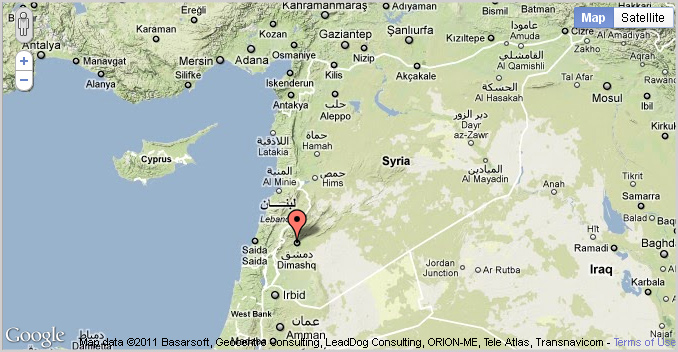|
• 1920: A kingdom is briefly established under King Faisal I until France takes over the country. • 1925: Sultan Al-Atrash leads a revolt against the French that lasts until 1927. • 1930: The Republic of Syria is established. • 1936: The French and Syrians sign a peace treaty to give independence to Syria. The French Parliament does not ratify the treaty. • 1941: Vichy France is forced to relinquish control of Syria by British and Free French troops. • 1946: Syria gains its independence. • 1948: Syria fights against Israel in the Arab–Israeli war. • 1956: Martial law is declared in Syria as a result of the Suez crisis. • 1958: Syria merges with Egypt to form the United Arab Republic. • 1961: Syria secedes from the union with Egypt. • 1963: The Arab Socialist Ba’ath Party takes over the country in a coup. • 1967: Syria fights Israel in the Six-Day War, losing the Golan Heights to Israel. • 1970: Syrian forces sent to Jordan to support the Palestine Liberation Organization (PLO) in the Black September hostilities are withdrawn and Hafez Al-Assad takes over power in the Corrective Movement. • 1973: Syria fights Israel in the October War. • 1976: The Muslim Brotherhood launch an uprising against the government and Syria begins its occupation of Lebanon. • 1982: The Islamic uprising ends with the Hama Massacre. • 1990–1991: Syria participates with the US in the Gulf War against Iraq. • 2000: Hafez Al-Assad dies and is succeeded as president by his son, Bashar. • 2003: Israel bombs a site near Damascus, claiming it is used by Islamic Jihadists. • 2005: Syria withdraws from Lebanon. • 2007: Israeli fighter jets bomb what they claim to be a nuclear reactor under construction. • March 2011: Peaceful protests as part of the Arab Spring are harshly suppressed by the army. • July 2011: The Free Syrian Army is formed to fight the Assad government militarily. • August 2011: The Syrian National Coalition is formed in opposition to the regime of Bashar Al-Assad and seeks to be recognized internationally as a government in exile. • January 2012: Assad begins large-scale shelling against insurgents, causing extensive damage to civilians and their property. • July 2012: The International Committee of the Red Cross declares the conflict a civil war as fighting spreads to most of the country. • September 2012: The Free Syrian Army moves its command headquarters from southern Turkey into rebel-held areas of northern Syria. • March 2012: Syrian government forces attack rebel positions in Lebanon for the first time. • March 2012: A now-infamous video released on YouTube shows a rebel commander known as Abu Saqqar eating the internal organs of a government soldier. • April–May 2012: The Assad regime and the rebels briefly enter a ceasefire negotiated by UN envoy Kofi Annan. • May 2013: Lebanese militant group Hezbollah admits that its soldiers are fighting alongside Assad’s forces in Syria. • July 2013: Fighting breaks out between Kurds and Islamists in northern Syria, a part of the civil war but not directly related to the fight against Bashar Al-Assad’s government. • July 2013: UN secretary-general Ban Ki-moon announces that more than 100,000 people have died in the conflict. • August 2013: The UN announces that 1 million children have been made refugees by the conflict, with 2 million more displaced internally. • August–September 2013: An alleged attack on civilians with a neurotoxic agent occurs in a Damascus suburb. A UN team investigates the allegations as the US and its allies declare the regime of Bashar Al-Assad responsible and plan a military strike in response. |
|
[map id=”countryBriefMapIn” w=”676″ h=”350″ z=”6″ maptype=”TERRAIN” address=”Damascus, Syria” marker=”yes”]

